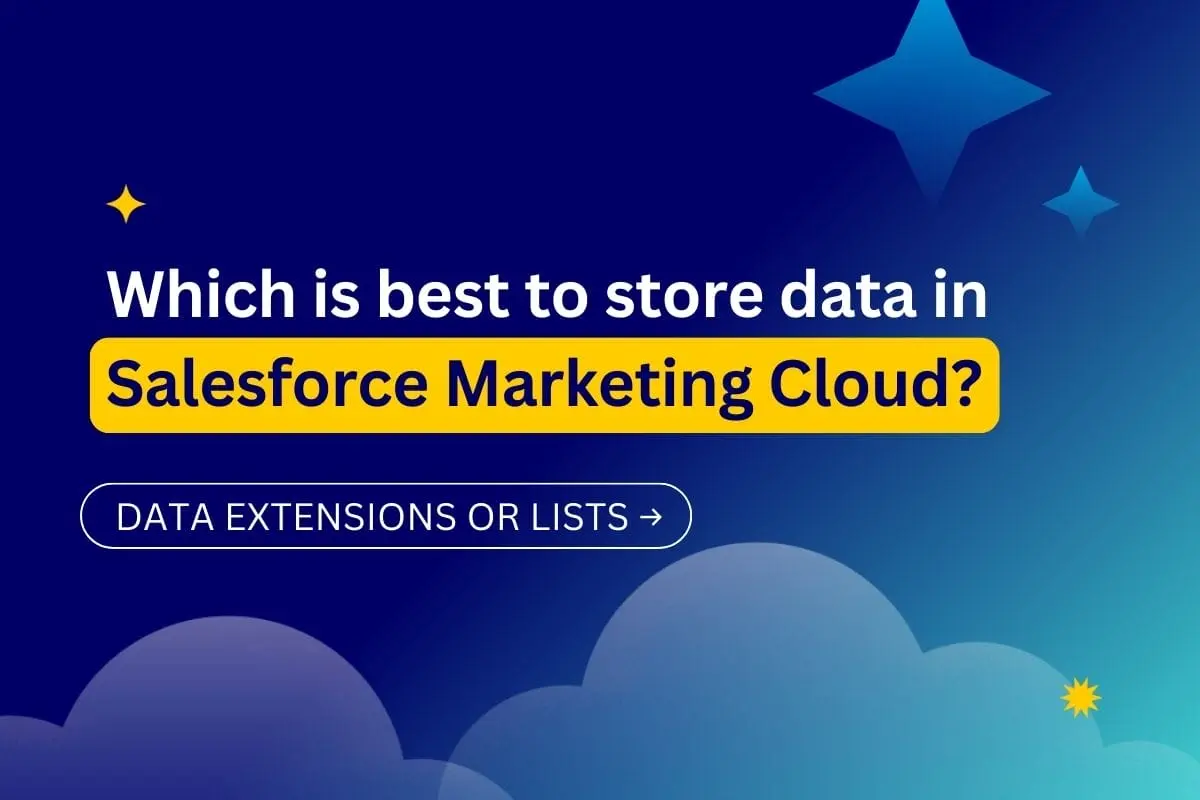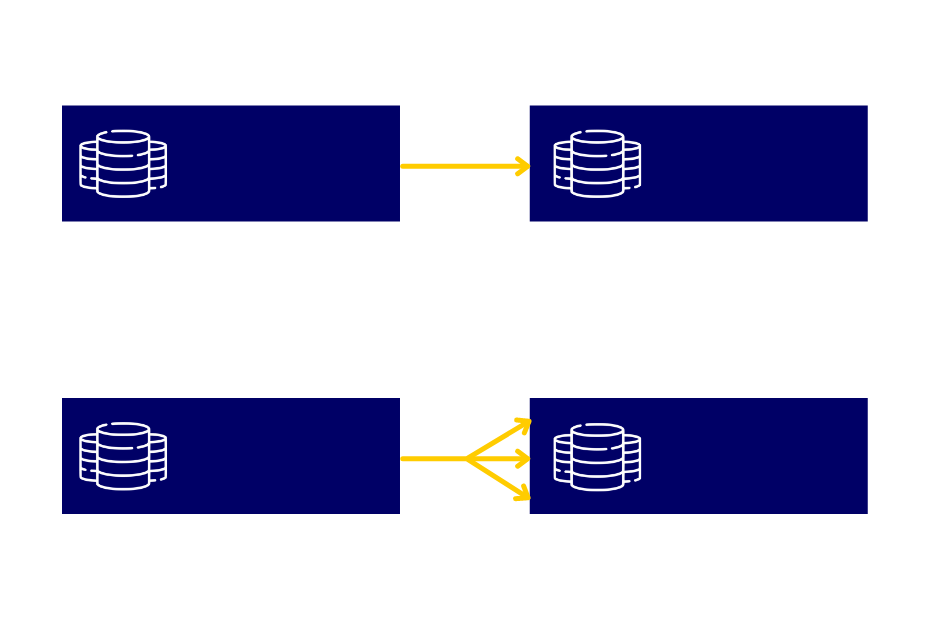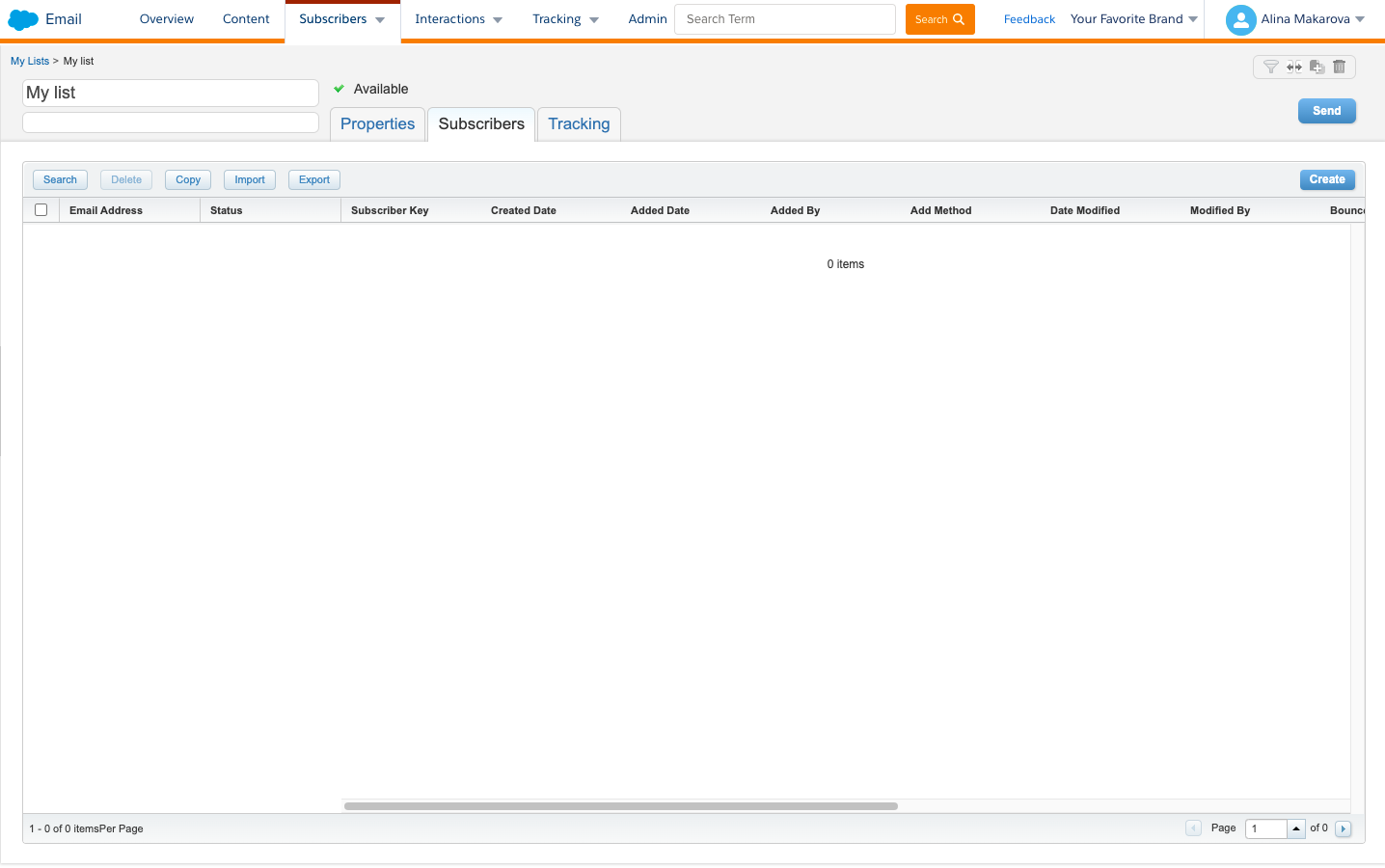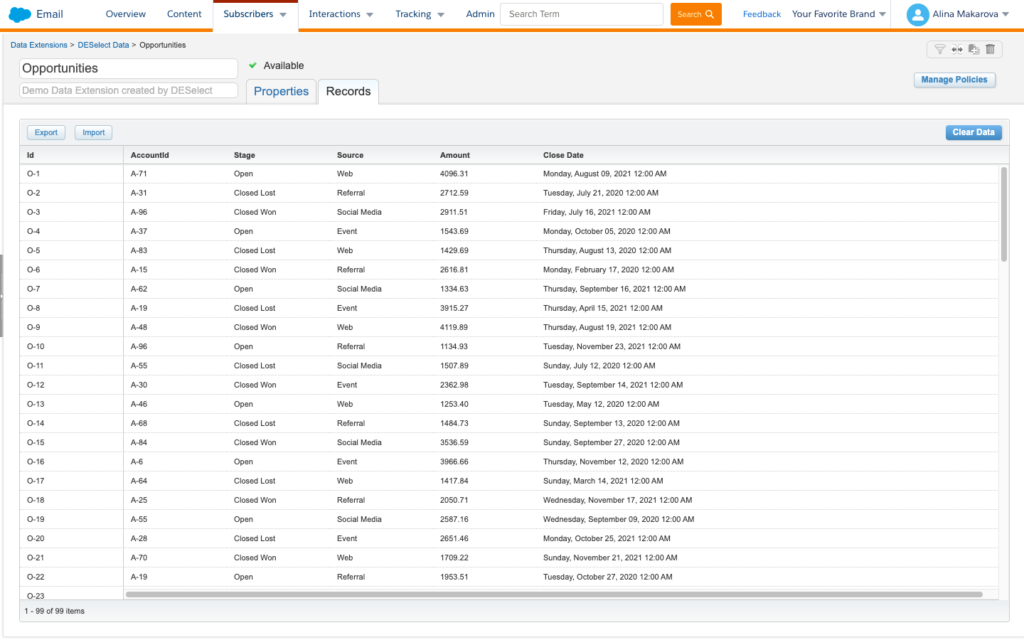
Storing subscriber data in Salesforce Marketing Cloud can be trickier than most marketers expect. As a versatile and powerful tool, SFMC offers more than one way to store subscriber lists or data within data extensions. This article intends to help you determine the best method for storing your data in the Marketing Cloud.
What kind of data can be stored?
Just about anything! Purchases, accounts, orders, types of products, and even personal data such as birthdays, email addresses, etc. These specific pieces of information can be combined to craft highly personalized points of communication, ensuring optimal customer engagement. While Marketing Cloud can be much more than just a data warehouse, its storage capabilities should not be overlooked for your future marketing campaigns.
Before looking for data storage solutions, marketers should first define which type of data model their marketing campaigns and operations require: 1-to-1 or 1-to-many. For example, if there is one email address and one Subscriber ID that relates to this email, it’s 1-to-1. On the other hand, if there is the need to relate this Subscriber ID to the purchase information, it would be 1-to-many, given that one subscriber can make several purchases.

However, it might be the case that the subscriber information relates to their other activities, further increasing the complexity of the 1-to-many data model. This would require a more flexible way to store that data so that it can be manipulated later.
Understanding Salesforce lists
Lists are the most basic way to store your subscribers’ data in SFMC. They are most useful when:
- Working with 1-to-1 data models
- The number of subscribers is below 500,000, and
- Customer segmentation needs are of low complexity.
In the case of a more extensive list of subscribers or a more complicated data model, businesses should opt for data extensions (DEs) for closer control over their marketing practices.

What are Salesforce data extensions?
Data extensions allow for more flexibility when it comes to data management and are the preferred method for dealing with 1-to-many data models. In simple terms, DEs are tables capable of containing a greater multitude of data than Salesforce lists.
Usually, they are utilized for storing data above 500,000 rows. They are also frequently used to import and store data from other systems through Marketing Cloud Connect (to send data from Salesforce Core to Salesforce Marketing Cloud) and similar tools.
Due to the variety of the types of information they can hold, DEs can be used for both transactional and commercial communication.
Data extensions also grant additional control over segmentation, although their setup can be more time-consuming than lists. Salesforce Marketing Cloud possesses built-in filters for simple requests, while more advanced segmentation requirements call for SQL queries. Tools such as DESelect Segment can help marketing teams work around the inconvenient and time-consuming task of SQL writing. This user-friendly app, available as a Chrome Extension and in the Appexchange, allows marketers to enjoy all the powerful functionalities of SQL queries while eliminating the need to write even a single line of code.

What is the difference between lists and data extensions?
Lists are only able to store basic subscriber data, such as email address, first name, last name, and so on, using the standard profile and subscription center. Alternatively, Data Extensions have minimal rules when it comes to storing data – they can be set up in whichever way best fits your org’s needs.
It is worth noting that setting up DEs may take some time, given that users should know what type of data is added to which field and follow a previously defined naming pattern (otherwise it becomes difficult to use the data when it comes to segmentation, for example). Data extensions do not require an email address (unlike lists) and can also store more advanced data such as product catalogs, sales representative information, and even behavioral data such as abandoned carts and site interactions.
When it comes to segmentation best practices, data extensions are preferred for 1-to-many data models. Critically, they allow marketers the option to create granular segments of their audiences through SQL queries, a process not possible with lists. In order to segment their audiences using lists, marketers would need to take the time to create several different lists.
In short, lists are best used for specific email sends lacking advanced data, whereas data extensions can be used for basically any type of communication or data management need. If the goal is to organize data with simplicity, go for lists. If you require fast import speed and support multiple subscriber datasets, use data extensions.
Conclusion
Using data extensions in Salesforce Marketing Cloud has many benefits for companies that store large quantities of data.
It is recommended to define the specific needs of your data model in advance and to determine how it will be stored in SFMC, as this will determine when and where to best use lists and/or data extensions. Also, keep in mind that Marketing Cloud is not a data warehouse, so there is no need to add all your data there just because you can.
One of the main advantages of using DEs in Marketing Cloud is data segmentation. Marketers can rely on SQL (if they have the technical knowledge), use filters for simple segmentation requests, or take advantage of a drag-and-drop alternative like DESelect Segment to make the process quick and intuitive for everyone.
- What data are we talking about?
- What are Salesforce lists?
- What are Salesforce data extensions?
- What is the difference between lists and data extensions?
- Conclusion
Latest Articles
-
The Ultimate Guide to AI-Powered Content Creation
The Ultimate Practical Guide to AI-Powered Content Creation If you’re ready, actually, to use AI in your marketing workflow, you don’t need another blog about what AI is; you need a hands-on playbook. This guide is a practical walkthrough of how to use AI to ideate, draft, edit, optimize, and publish content consistently at scale. […]October 31, 2025How to Measure the ROI of AI Copywriting Tools
How to Measure the ROI of AI Copywriting Tools AI copywriting tools have become essential for SaaS and consumer brands alike, not just for cutting the cost of content creation but also for winning new customers. But measuring the ROI of these tools goes beyond counting words generated or hours saved. Today, ROI also includes […]October 24, 2025The Future of Generative AI in Copywriting
The Future of Generative AI in Copywriting Generative AI is already rewriting how copywriters, marketers, and brands create content. But the future? It’s far bigger than “faster blogs and ads.” The next decade of AI in copywriting will go beyond efficiency; it will reshape creativity itself, reframe how brands tell stories, and even redefine the […]October 23, 2025Why AI Outputs Often Feel Too Generic
Why AI Outputs Often Feel Too Generic Content personalization has always been the holy grail of marketing. Delivering the right message to the right person at the right time can dramatically improve engagement, conversion rates, and trust. But scaling personalization across multiple buyer personas, industries, and customer journeys has traditionally been expensive and time-consuming. Generative […]October 23, 2025










